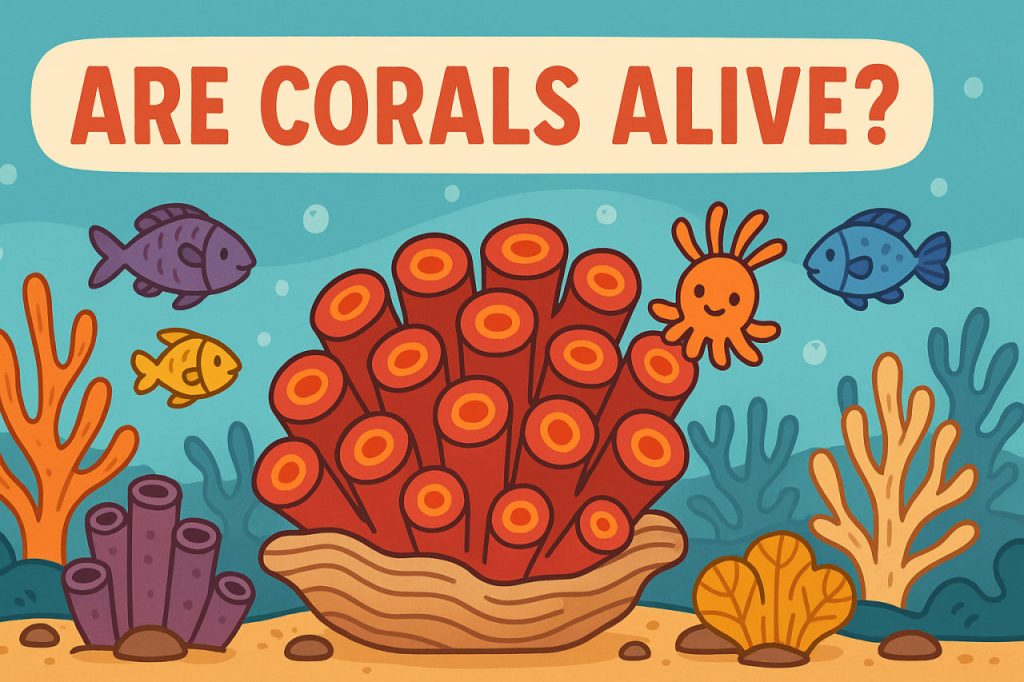At first glance, corals might look like colorful rocks or underwater plants, but they are in fact alive—amazingly so. Corals are living marine animals that form the foundation of some of the most diverse ecosystems on Earth: coral reefs. These small but mighty creatures are both delicate and powerful, building vast underwater structures over centuries.
What Are Corals?
Corals are invertebrate animals, related to jellyfish and sea anemones. Each coral is made up of tiny individuals called polyps. A polyp is a small, soft-bodied creature with a mouth surrounded by tentacles. Most corals live in large colonies made up of thousands of polyps working together.
These polyps secrete calcium carbonate, a hard substance that forms the external skeleton of the reef. Over time, these skeletons build up and create massive structures we call coral reefs.
How Do Corals Live and Eat?
Corals have a fascinating way of feeding. They catch tiny plankton with their tentacles, but they also have a powerful partner: algae called zooxanthellae live inside coral tissue. These algae perform photosynthesis, turning sunlight into energy, and share it with the coral. In return, the coral provides a safe home and nutrients for the algae.
This symbiotic relationship is what gives coral reefs their vibrant colors and supports life in warm, shallow waters.
Corals as Ecosystem Builders
Even though each polyp is small, coral colonies grow together to form entire reef systems. These reefs are home to more than 25% of all marine species, including fish, crustaceans, mollusks, and more. Coral reefs act as underwater cities, nurseries, and feeding grounds.
They also protect coastlines from waves and storms by absorbing energy from the sea, reducing erosion and flooding.
Are All Corals the Same?
There are many different types of corals. Some build reefs (called hard corals) by producing a stony skeleton. Others, like soft corals, do not build reefs but still support marine life with their flowing, flexible structures.
Colors, shapes, and sizes vary widely, from delicate branching corals to massive boulder-like formations.
Threats to Coral Reefs
Despite being alive and vital, corals are extremely sensitive to change. Rising sea temperatures, ocean acidification, pollution, and overfishing all threaten coral health. When stressed, corals may expel their algae in a process called coral bleaching, turning white and becoming vulnerable to death.
Efforts to protect reefs include marine protected areas, coral farming, and reducing carbon emissions globally.
Glossary
- Invertebrate – An animal without a backbone.
- Polyp – A small coral organism that forms part of a colony.
- Calcium carbonate – A hard substance secreted by corals to build reefs.
- Photosynthesis – The process by which plants and algae use sunlight to make energy.
- Symbiotic relationship – A partnership between two species that benefits both.
- Coral bleaching – A stress response in which corals lose their algae and color.


